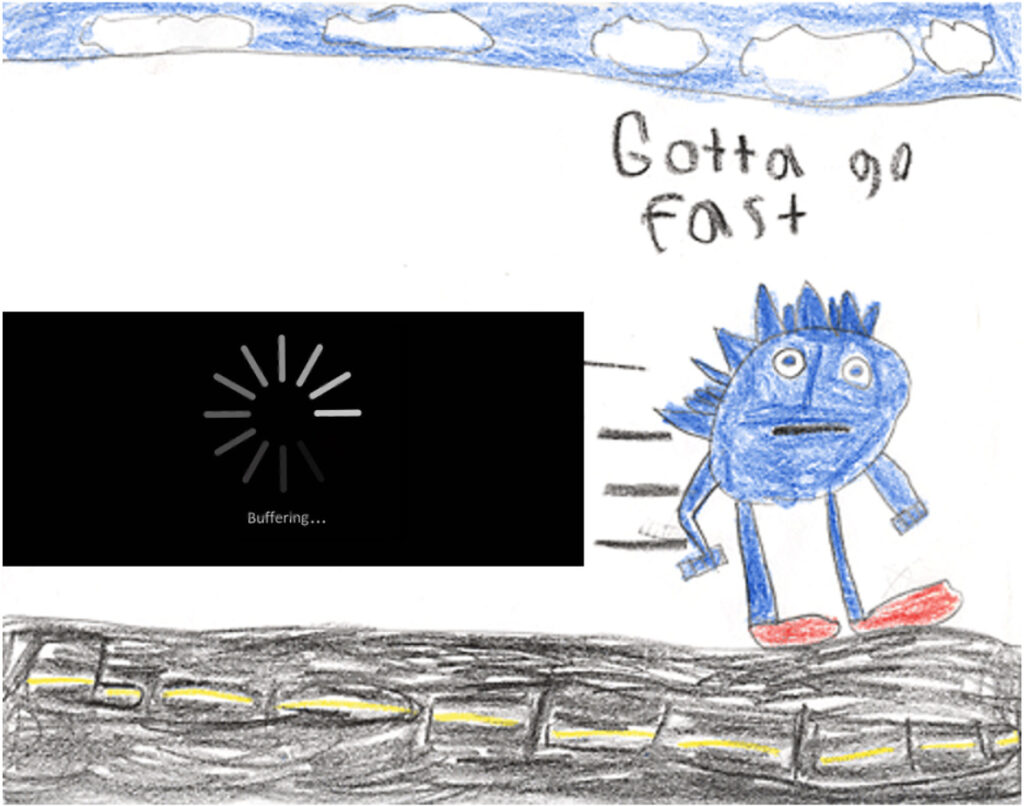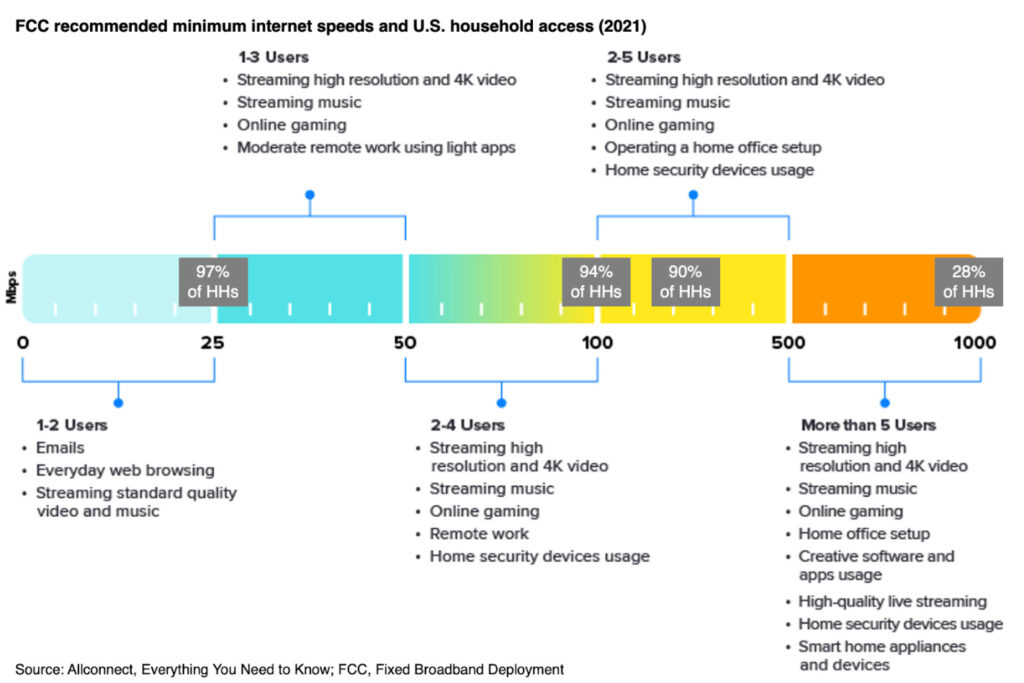
Federal Communications Commission (FCC) Chair Jessica Rosenworcel this week announced a notice of inquiry (NOI) seeking input on a proposal to raise the minimum connection-speed benchmarks that the commission uses to define “broadband.” The current benchmark speed is 25/3 Mbps. The chair’s proposal would raise the benchmark to 100/20 Mbps, with a goal of having a benchmark of 1000/500 Mbps by the year 2030.

In announcing the NOI, the chair noted that the benchmark has not been adjusted since 2015 and concluded:
This standard is not only outdated, it masks the extent to which low-income neighborhoods and rural communities are being left offline and left behind.
While it’s true that rural areas and low-income households have lower rates of broadband access and adoption, it’s also true that about 94% of U.S. households already have access to download speeds of 100 Mbps or greater. If the FCC wants to increase the number of households with 100/20 Mbps speeds, it should recognize that much of the gap is driven by lower rates of adoption, rather than a lack of access to higher speeds.
In an International Center for Law & Economics (ICLE) issue brief, we find that about two-thirds of households without at-home internet have access, but don’t subscribe. The brief argues that, for households without a broadband subscription, their smartphone internet service may provide a superior “bang for the buck” relative to fixed broadband.
According to Pew Research, 19% of respondents said the most important reason for not having broadband at home is that their smartphone does everything they need to do online. Moreover, as shown in the figure below, download speeds of 25-100 Mbps are sufficient for most households’ internet use.

One might argue that raising the benchmark is relatively harmless. Most households can already obtain the higher speeds, and the increase is simply an adjustment to the reality of today’s prevailing speeds. Moreover, as Allconnect points out, internet service providers (ISPs) will be required to offer speeds of at least 100/20 Mbps in order to receive funding from the $42 billion Broadband Equity Access and Deployment (BEAD) Program. And there are efforts to require ISPs to offer 100/100 Mbps speeds in order to receive funding under the Farm Bill currently before Congress.
On the plus side, broader adoption of higher-speed internet could foster new applications in telemedicine, remote learning, and metaverse experiences. With more bandwidth, households could connect more devices and more members of the household could use data-hungry apps simultaneously.
But sharply increasing minimum speeds also risks overbuilding networks, especially in areas with low population density or other areas where deployment costs per-household are high. These costs would need to rise sharply to meet the 1,000/500 Mbps benchmark. More importantly, it’s not clear that households either need or want to pay for 1,000 Mbps connections—at least, not yet, and not at currently prevailing prices.
Advocates for the increased benchmarks argue that a goal of 1,000/500 Mbps is necessary to “future proof” against the growing demand for bandwidth. But no one can perfectly predict future demand or future innovations. In the face of increasing demands on internet infrastructure, providers will have enormous incentives to develop technologies that more efficiently use the available bandwidth. And if, down the road, it appears that higher speeds are economically justified, companies will likely invest without needing any prodding from regulators. After all, they want to satisfy customers.
Rather than a one-size-fits-all approach toward benchmarking internet speeds, a more balanced approach would evaluate the feasibility of attaining the benchmarks given each area’s idiosyncratic technical and economic features and limitations.




